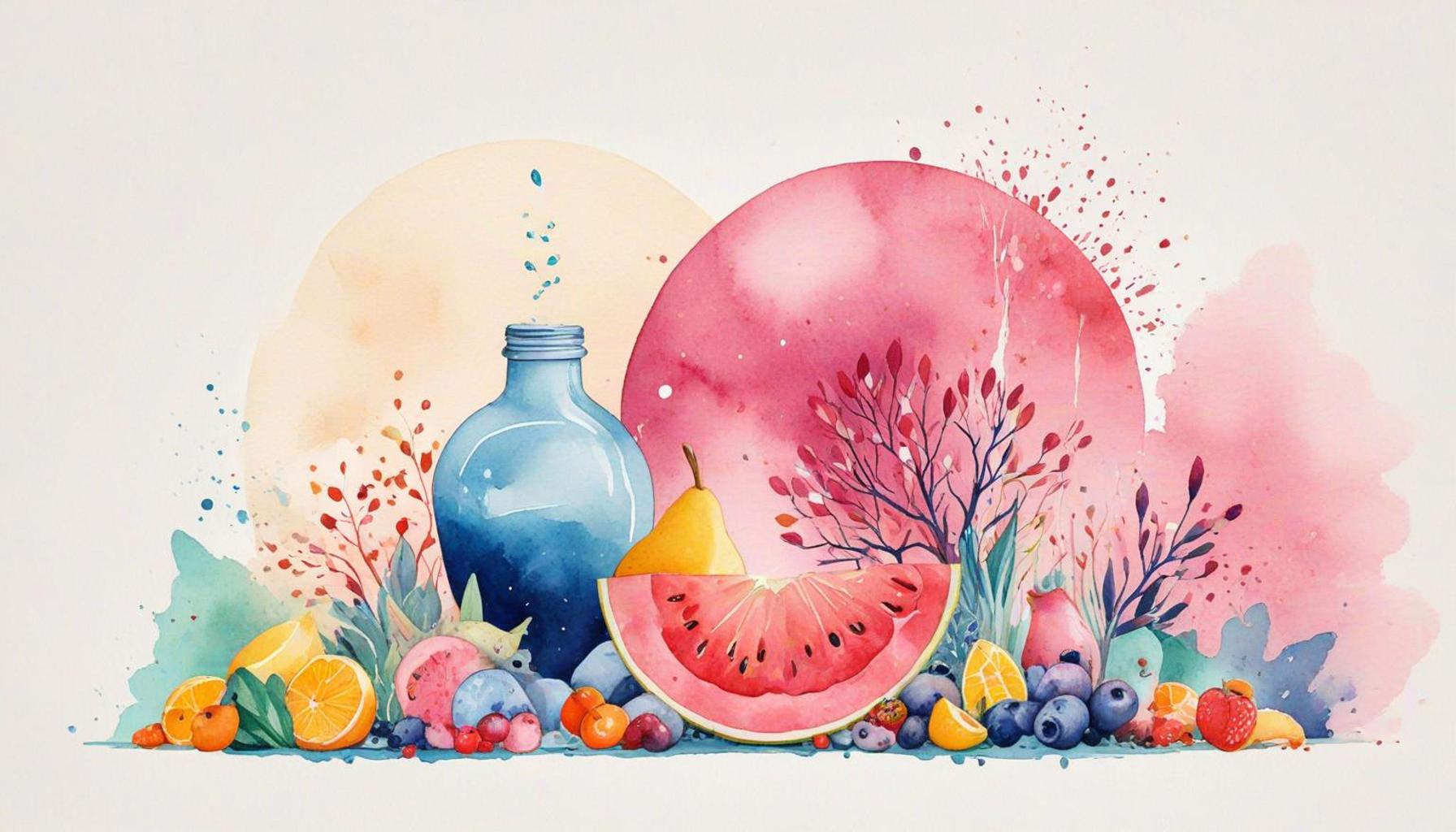How conscious consumption can influence design decisions in minimalist environments

Understanding the Impact of Conscious Consumption
In an era marked by environmental crises and social responsibility, the movement towards conscious consumption is rapidly gaining momentum. This evolving mindset is not merely a fleeting trend; it signifies a profound shift in how individuals approach the acquisition of goods and services. With sustainability at the forefront, conscious consumers are increasingly aware of how their choices affect the planet, society, and their personal well-being. This awareness is particularly impactful in minimalist environments, where the design and use of space prioritize function and sustainability.
Minimalism embraces the philosophy that “less is more.” This ethos translates into several critical aspects of conscious consumption:
- Quality over quantity: In a world filled with disposable products, conscious consumers are gravitating towards items made from durable and sustainable materials. For instance, furniture crafted from solid wood instead of particle board not only offers longevity but also represents a commitment to responsible sourcing.
- Functionality: Minimalist design emphasizes necessity over excess, encouraging a thoughtful selection of items that serve multiple purposes. For example, a well-designed sofa can double as a guest bed, reducing the need for additional bulky furniture.
- Timelessness: The conscious consumer favors designs that withstand the test of time, opting for classic aesthetics over fleeting fads. This choice not only reduces waste but also fosters a deeper emotional connection to possessions.
As consumer preferences shift, they exert substantial influence on designers and manufacturers. This growing demand for sustainability manifests in several transformative ways:
- Eco-friendly materials: Innovative materials, such as bamboo, reclaimed wood, and recycled metals, are gaining traction. For example, a surge in the use of recycled aluminum in kitchenware reflects a broader commitment to reducing our ecological footprint.
- Local sourcing: There is an increasing focus on supporting local artisans, which not only fosters community but also minimizes transportation emissions, contributing to a wider cultural appreciation for craftsmanship.
- Innovative designs: In response to the demand for efficient living, designers are creating solutions that maximize utility within smaller spaces. Multifunctional furniture and smart storage solutions are prime examples of this trend in urban-centric lifestyles.
The implications of conscious consumption extend beyond individual purchasing decisions; they also reshape design principles that impact various aspects of life. In the United States, this shift is evident in housing trends, retail strategies, and consumer behavior patterns. Initiatives to promote sustainability, like the popularity of tiny homes and eco-villages, reflect a collective desire for a lifestyle that honors both individual needs and the environment.
Ultimately, understanding the relationship between conscious consumption and minimalist design provides valuable insights for consumers and designers alike. It opens pathways to create not only aesthetically pleasing environments but also ones that align with a more sustainable future. This commitment to mindful living encourages individuals to take responsibility for their choices, fostering a culture of environmental stewardship and social awareness.
DISCOVER MORE: Click here for tips on boosting your efficiency
Transforming Spaces through Sustainable Choices
As the dialogue surrounding conscious consumption gains traction, it fundamentally alters the relationship between consumers and designers in the realm of minimalist environments. This transformation is not only aesthetic but extends to ethical considerations that shape how spaces are conceived and created. In minimalist design, where the mantra is “less is more,” every element must serve a purpose, making the stakes of sustainability even higher. The choices made by conscious consumers ripple through design decisions, encouraging practices that prioritize the health of the planet alongside stylish living.
One of the most prominent effects of conscious consumption is the call for eco-friendly materials. Designers and manufacturers are responding to this demand by sourcing alternatives that lessen environmental impact. Popular choices include:
- Bamboo: A rapidly renewable resource, bamboo provides a sustainable alternative to traditional woods. Its robust nature makes it suitable for furniture and flooring while helping to combat deforestation.
- Reclaimed wood: While often steeped in history, reclaimed wood brings character to minimalist designs. This sustainable option not only reduces industrial waste but also adds a layer of storytelling to interior spaces.
- Recycled materials: Materials like recycled aluminum and plastics are being creatively integrated into furniture and decor, showcasing innovative design while minimizing landfills.
Moreover, conscious consumption fosters a growing appreciation for local sourcing. By choosing to support local artisans and producers, consumers help sustain regional economies and reduce the carbon footprint associated with long-distance transportation. This shift promotes a unique identity to each space, intertwining design with local culture and craftsmanship. An increasing number of designers in cities like New York and Portland are championing this approach, forming collaborations with local makers to bring distinctive and sustainable elements to their projects.
The minimalist principle of functionality is also enhanced by this culture of conscious consumption. In an age of urbanization, where space is often confined, designers focus on creating multi-functional pieces that reduce clutter and maximize utility. Examples include:
- Sofas that convert to beds: Ideal for small apartments, these versatile solutions allow for comfortable living and accommodating guests, all while maintaining an aesthetically pleasing design.
- Modular shelving systems: These can be reconfigured to fit various spaces and needs, making them a sustainable choice as they evolve with consumers’ lifestyles.
- Foldable furniture: Items that can be easily stored away offer flexibility and efficiency, aligning perfectly with the minimalist ethos of simplicity and intent.
Ultimately, as conscious consumption transforms consumer expectations, designers are prompted to innovate in ways that elevate both sustainability and aesthetics. The intersection of these values is paving the way for environments that not only look good but also feel good, resonating with the growing desire for a more mindful approach to living. This evolving landscape invites everyone involved—from consumers to creators—to participate in a collective movement toward a sustainable future, reaffirming the vital role of conscious choices in shaping our spaces.
How Conscious Consumption Shapes Minimalist Design
In recent years, conscious consumption has emerged as a significant trend influencing design decisions, especially in minimalist environments. This approach encourages consumers to think critically about their purchases, focusing on sustainability, quality, and the overall impact of their consumption choices. As a result, designers are now prioritizing these values when crafting spaces that reflect the principles of minimalism.
A key aspect of this shift is the movement towards sustainable materials. Designers are increasingly opting for resources that are not only eco-friendly but also durable, ensuring that stylish aesthetics do not come at the cost of the planet. Utilizing materials such as reclaimed wood or organic textiles allows for a beautiful yet responsible design that resonates with environmentally-conscious individuals.
Moreover, conscious consumption drives the need for multifunctionality in design. With minimalist environments focusing on decluttering and simplicity, products that serve multiple purposes are gaining popularity. This shift reduces waste and emphasizes the importance of quality over quantity, contributing to a more meaningful consumer experience.
By prioritizing thoughtful design choices, creators are redefining modern living spaces, making them not only visually appealing but also reflective of our values and aspirations. As consumers continue to embrace this mindset, the influence on design decisions will shape the future of minimalist environments.
| Advantages | Influence on Design |
|---|---|
| Sustainability | Promotes eco-friendly materials in design. |
| Multifunctionality | Encourages designs that maximize space and utility. |
This enriching perspective not only elevates our living spaces but also champions the ethics of our purchasing habits. As we continue to explore the interplay between conscious consumption and design, exciting innovations will emerge, forging a path toward a more sustainable and aesthetically pleasing future.
DIVE DEEPER: Click here to discover more
Rethinking Aesthetics: The Harmony of Minimalism and Sustainability
As conscious consumption continues to reshape the design narrative, it invites a rethinking of aesthetics that harmonizes minimalism with environmental responsibility. The traditional idea of beauty is evolving; sustainability is now intertwined with appealing design, revealing a fresh perspective that appeals to modern consumers. This transformation fosters creativity in the design industry as it pushes professionals to break away from standard practices and embrace innovative approaches that reflect consumers’ values.
One area significantly impacted by this shift is lighting design. The demand for energy-efficient solutions has led to a surge in the adoption of LED technologies in minimalist environments. This transition not only reduces energy consumption but also encourages designers to think more critically about how light affects spatial perception. Studies show that impactful lighting can alter mood, evoke emotions, and even affect productivity. As designers incorporate daylight harvesting techniques—using windows and skylights to maximize natural light—they create open and inviting spaces that align with minimalist ideals, stripping away unnecessary artificial elements.
The influence of conscious consumption extends to the realm of color palettes as well. Minimalist spaces often favor muted and neutral tones that evoke tranquility and simplicity. However, an emerging trend among environmentally conscious consumers is the inclusion of bold, nature-inspired hues sourced from eco-friendly pigments. This approach not only enhances aesthetics but also echoes a broader commitment to sustainability. For instance, Earth Tone Paints, which utilize mineral-based colors, are showing up in homes across the United States, offering a palette that connects residents to nature while promoting chemical health in their living environments.
Moreover, the cultural shift towards conscious consumption is revolutionizing the approach to furnishings and decor. The rise of the “buy less, choose well” ethos encourages consumers to invest in timeless pieces that embody quality craftsmanship over transient trends. This has ignited a resurgence of interest in vintage and antique items that seamlessly blend with minimalist designs while celebrating history and authenticity. For example, mid-century furniture, characterized by its simple forms and functional design, is gaining popularity as more individuals seek to curtail mass production’s environmental footprint and add a story to their interiors.
Additionally, conscious consumers advocate for biophilic design, which integrates elements of nature into built environments. This trend not only enhances aesthetic appeal but also promotes overall well-being. Incorporating living walls, indoor gardens, or large planters into minimalist spaces not only introduces a vibrant natural element but also improves air quality and psychological health. As consumers increasingly prioritize wellness in their living spaces, designers are compelled to explore inventive ways to merge the natural world with minimalist principles.
Finally, the influence of conscious consumption is prompting a critical examination of the lifecycle of products. Designers are more frequently considering the durability and end-of-life options for their creations. The push for transparency in sourcing and manufacturing processes fosters an informed consumer base that favors brands that prioritize ethical practices. Consequently, this scrutiny is leading to innovations in design that downplay disposability and champion longevity, reflecting the minimalist belief in quality over quantity.
As designers navigate the void between conscious consumption and minimalist aesthetics, they are not just shaping spaces but also influencing consumer behaviors and values. The result is a continual evolution of design that emphasizes sustainability and mindfulness while crafting environments where every item has intention and meaning, perfectly bridging minimalism with a holistic respect for the planet.
EXPLORE MORE: Click here to enhance your productivity
Conclusion: A Future Shaped by Mindful Design
In conclusion, the intersection of conscious consumption and minimalist design is redefining the aesthetic landscape and our relationship with the spaces we inhabit. As consumers increasingly prioritize sustainability and ethical practices, designers are compelled to innovate in ways that align with these values. The resulting transformation not only emphasizes the beauty of simplicity but also brings forth a deeper appreciation for quality over quantity, encouraging a harmonious existence with nature.
From the thoughtful implementation of energy-efficient lighting solutions to the selection of durable, timeless furnishings, every aspect of design is being reimagined. This cultural shift spearheads an array of trends, including biophilic design, which enhances not just physical spaces but also the psychological and emotional well-being of occupants. The adoption of eco-friendly color palettes like Earth Tone Paints and vintage materials exemplifies how aesthetics can flourish while prioritizing environmental health.
As this movement gains momentum, it drives consumers and designers towards a shared vision of spaces that are intentional, meaningful, and sustainable. By valuing mindful choices in design, we are crafting an environment where each detail serves a purpose, demonstrating that minimalism is not just a style, but a lifestyle rooted in respect for both quality and the planet. As readers explore this evolving narrative, they are encouraged to engage in their consumption choices and discover how these decisions can shape a more sustainable future in minimalist design.


